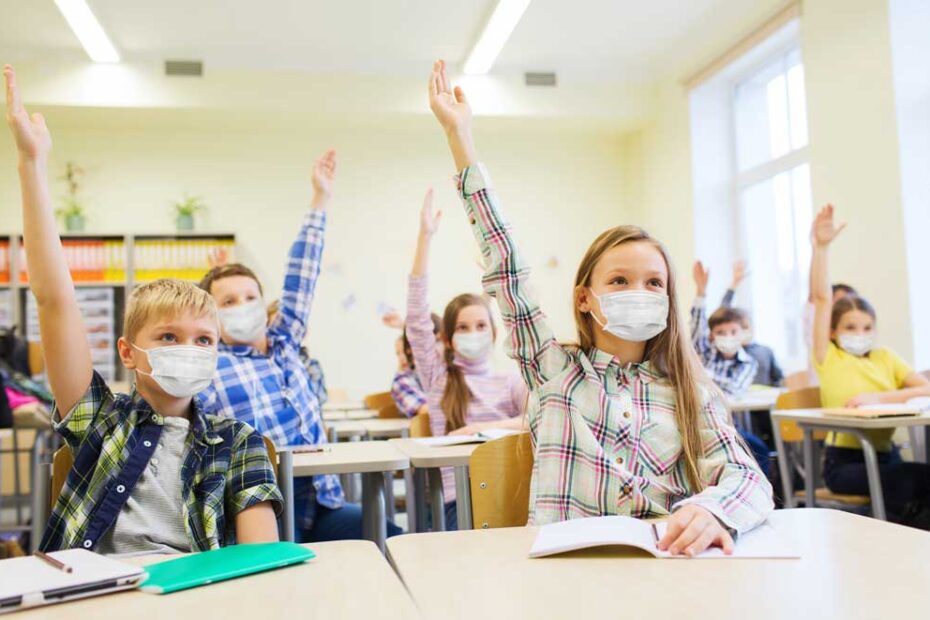The classroom has many lessons it can teach the boardroom. Five years ago, I wrote a series of chapters in the book HOPE for Leaders Unabridged on what the business world could learn from K-12 education. As business gets ready for the post-pandemic world, there are new lessons on mental health, culture, climate and intentional forward momentum that could benefit the office as well as the kids.
first posted in: https://www.bizjournals.com/louisville/news/2021/02/05/what-we-can-learn-from-the-k-12-education-pandemic-response.html?iana=cco_landing_news
In the world of education, schools have either been doing nontraditional instruction (NTI), a hybrid off-site-on-site model or holding in-person classes with limitations on things like lunch, sports and extracurriculars. No matter the school’s delivery of learning, educators are bracing for a 2021-2022 school year like no other.
The hope is that vaccinations will be nearly complete by fall 2021, but students will likely return to school with mental health issues, as well as socialization and culture deficits, and they might have lost ground with being “on-grade” — students that were previously on-grade might have slipped behind, and students that were already behind will likely see the gap increase.
Maybe workspaces are desolate right now or at least severely restricted. New employees might not have been in the same room with most of the team. Old patterns and workflow might have been clunky when trying to fit them into a virtual environment. Both a change in work norms and standard operating procedures (SOPs), as well as the weight of the pandemic and the last four months of current events, could have severe impacts on mental health and work productivity.
As leaders, we should be planning now for our post-pandemic workplace. Here are some things we learned from K-12 that we can apply to business.
What positives came out of the pandemic?
New processes, adopting new technologies, less travel, more flex scheduling and generally seeing old business practices through a new lens. Stephen Covey, author of The 7 Habits of Highly Effective People, writes that you can’t have a breakthrough until you have a break-with. Let’s make sure we are intentional about the old processes we bring back and make sure we incorporate the learning curve that the last year has imposed upon us. In education, NTI has changed how we think about snow days, facility issues, the data we capture and the interventions we select. A lot of good can be gleaned from this bad situation.
What will your new culture be like?
If your team has been working remotely for 12 months and then comes back into the office full time, things will be different. The culture and climate of 2019 are now fossilized. There will be new pecking orders, informal mores and employee attitudes, as well as possibly new policies about working from home, office expectations and shifts in SOPs. Leadership has a precious few months to set an intentional culture and climate into motion. If you don’t plan culture, then you end up having to accept whatever culture pops up organically, and it is much harder to lose bad habits after they have become the norm.
How has this affected your people?
In K-12, we have students, faculty, leadership, support staff, community stakeholders and wrap-around service providers that have all been affected differently by the pandemic. Are there mental health issues that need to be addressed? Are there physical health issues that persist? Have people suffered tragedies or hardships over the last year that may impact them? Giving people space to re-onboard, knowing that productivity will take a short-term dip as people shift back to in-person work and making sure everyone has access to support services, is a good long-term strategy for having people get back into the workplace. https://586864ffcd4d19d31829ff405feed852.safeframe.googlesyndication.com/safeframe/1-0-37/html/container.html
How will you change going forward?
Some offices might stay remote for some time to come. Virtual work requires less travel time, fewer square feet of office space and fewer nonwork issues to address. New tech might have been integrated over the last year. What does that look like with people partially or completely back in the office? Customers have become more used to virtual visits. What does that mean for traveling, the budget and recaptured time? Schools that are reopening are phasing grade levels back in and giving some the option to continue NTI longer. How will you transition to your new normal?
How do you plan for similar events?
As 2021 starts, we are beginning to realize there are a lot of crazy things that can affect the market, our work experience and our lives at home. Many of us were blindsided by the speed and scale of Covid-19 and the business implications on how we work, lead and judge success. Having a post-pandemic postmortem to capture and institutionalize what went right, where the opportunities for improvement are and what the next steps are will ensure that we’re better equipped to tackle the next challenge.
Over the last year, many school systems and businesses have been in “keeping their head above water” mode. Keeping the doors open, trying new things, learning from mistakes and adapting quickly were about as much as we could do. As we look forward to the post-pandemic world, we will be different. If approached correctly, we can be better. If left unattended, our cultures and morale can be much worse. Physicist Ilya Prigogine coined the term “bifurcation point.” In simplest terms, it talks about a natural order coming out of chaos. We know things will be different as the world opens back up. It is how we approach the new world that will determine if that is positive or negative. Everything we know about K-12 education is being reevaluated through lessons learned in the pandemic. How introspective will your organization be? https://586864ffcd4d19d31829ff405feed852.safeframe.googlesyndication.com/safeframe/1-0-37/html/container.html
Dr. Joe DeSensi, President of Educational Directions, a K-12 educational consulting firm serving communities for over 22 years.


